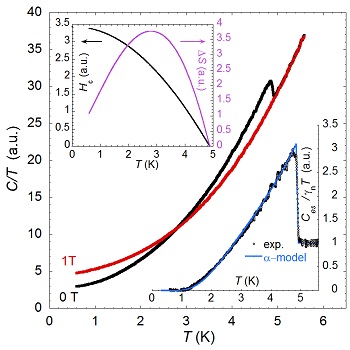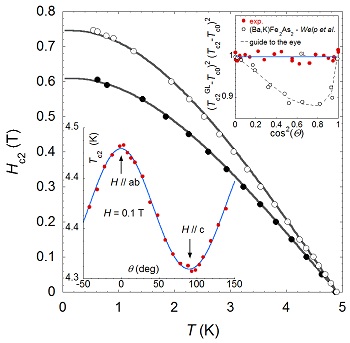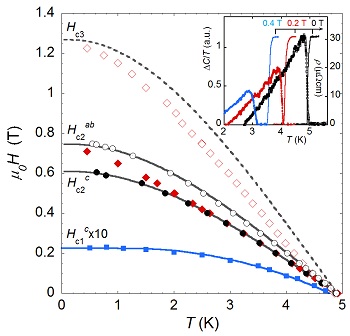Superconductivity
Supravodivosť
Single-gap superconductivity in β-Bi2Pd
The β-Bi2Pd compound has been proposed as another example of a multigap superconductor [Imai et al., J. Phys. Soc. Jpn. 81, 113708 (2012)]. Here, we report on measurements of several important physical quantities capable of showing a presence of multiple energy gaps on our superconducting single crystals of β-Bi2Pd with the critical temperature Tc close to 5 K. The calorimetric study via a sensitive ac technique shows a sharp anomaly at
the superconducting transition, however only a single energy gap is detected. Also other characteristics inferred
from calorimetric measurements as the field dependence of the Sommerfeld coefficient and the temperature
and angular dependence of the upper critical magnetic field point unequivocally to standard single s-wave gap
superconductivity. The Hall-probe magnetometry provides the same result from the analysis of the temperature
dependence of the lower critical field. A single-gapped BCS density of states is detected by the scanning
tunneling spectroscopy measurements. Then, the bulk as well as the surface sensitive probes evidence a standard
conventional superconductivity in this system where the topologically protected surface states have been recently
detected by angle-resolved photoemission spectroscopy [Sakano et al., Nat. Commun. 6, 8595 (2015).].
J. Kačmarčík, Z. Pribulová, T. Samuely, P. Szabó, V. Cambel, J. Šoltýs, E. Herrera, H. Suderow, A. Correa-Orellana,
D. Prabhakaran, and P. Samuely:
Single-gap superconductivity in β-Bi2Pd
Physical Review B 93, 144502 (2016).


